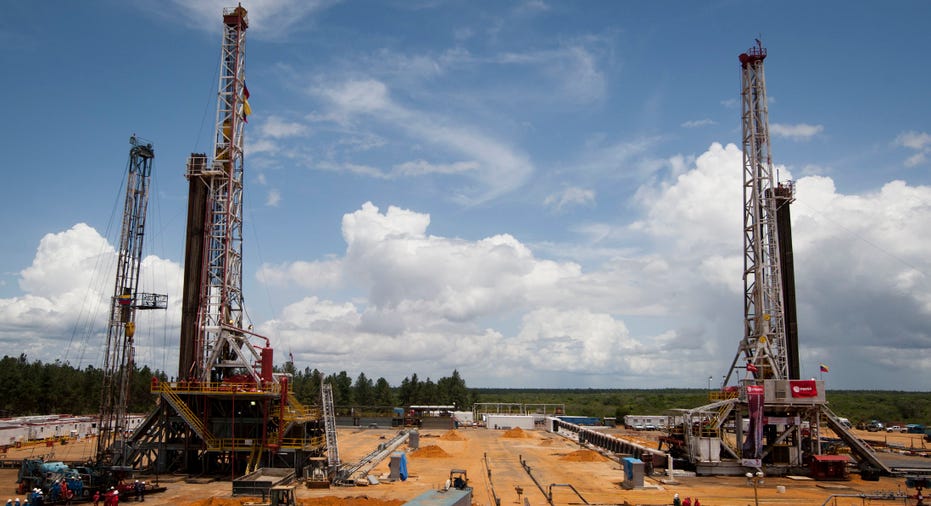Oil and Gold Warning Signs

A big spike in gold prices and continued weakness in oil is sending warning signs about the health of the global economy. As China reported Tuesday its consumer price index rose only 1.4% last month -- the slowest pace in five years -- global deflation fears are mounting. In Greece, a snap election is causing turmoil in the Greek bond market as they try to negotiate their debt financing and independence away from its European bailout strictures. OPEC is reporting the demand for its oil will be at the lowest level in 12 years. So if deflation is the fear, than the spike in gold yesterday is very troubling. Safe haven buying in US bonds and metals signal fears that the globe is on the verge of a downward deflationary spiral.
Let’s focus on oil first. The dramatic price drop inspired by the OPEC price war, but being reinforced with lowered demand expectations, is already having a deflationary impact on the energy sector. Investment in the sector is freezing up, as a crashing oil price makes it almost impossible to evaluate oil projects, especially when you have Iran saying that oil could go into the $40’s. OPEC lowered their demand forecast for their oil to 28.9 million barrels, but in November produced 30.05 million barrels per day. That was actually less production than last month, but it was because of maintence in Saudi Arabia and issues in Kuwait and Libya. The overproduction is tanking prices as the cartel more than likely will see an increase in production this coming month.
Just yesterday the Energy Information Administration said that U.S. oil production growth will slow next year in response to lower crude prices. The EIA cut its crude price forecasts by $15 a barrel. The agency reduced its 2015 U.S. oil production outlook for a second month. We also heard from ConocoPhillips, which said it would reduce investment spending by 20% next year in response to the price drop. BP is saying that it will cut hundreds of jobs across its global oil and gas business by the end of next year in a $1 billion restructuring. While some of that is due to the Gulf oil spill, it is no doubt that lower oil prices are not helping. Dow Jones reports that the sell- off in energy is leading to a swoon in Goldman Sachs credit operations. Citing "tougher credit and high-yield markets" and "a full valuation," Susquehanna downgrades Goldman Sachs to neutral and drops its price target to $200 from $218, while trimming EPS views through next year. Susquehanna notes energy makes up 16% of the high-yield market now, and the sector has been the source of 22% of US high-yield issuance this year and 16% of loans. With oil slumping 30% just this quarter, "we expect an incredibly difficult comparable in 2015." The firm also notes GS has had "a great 2 years" for harvesting investment gains. "Combined with yet-another potential addition to the buffers for capital from the Federal Reserve, we think there is some downside risk to capital returns in 2015."
The bottom line is one of the aspects of a deflationary environment is when capital has an incentive to delay investment, because prices continue to fall, because the risk adjusted return on investment on assets drops to negative, investors stay in cash. That is not good for growth over all, and it may spill over into other sectors of the economy. There may have to be dramatic action by global central banks to try to offset what may be the most significant deflationary threat since the meltdown of 2008.
Yet gold is popping. Talk of the Russian central bank buying gold to reduce its ruble exposure as its currency gets smoked as oil prices collapse is only one of many reasons. Norway is repatriating some gold reserves amid talk that other European Central banks will be doing the same. India lifted gold restriction and may open up the buying of gold to all trading houses and alow banks to beef up their gold reserves. Reuters reported that India may change a rule mandating that “star trading houses” export all of their gold imports.
During the recent selloff in oil, gold tried to follow, but if they continue to diverge it could signal bad things on the horizon. If we see this accelerate, it is time to move to safety.
Price Links Video series gives insight across the financial spectrum. https://www.youtube.com/playlist?list=PLDq9JQANqxRxCBaHqunzBT4Frxitjw-XV
Past results are not necessarily indicative of future results. Investing in futures can involve substantial risk of loss & is not suitable for everyone. Trading foreign exchange also involves a high degree of risk. The leverage created by trading on margin can work against you as well as for you, and losses can exceed your entire investment. Before opening an account and trading, you should seek advice from your advisors as appropriate to ensure that you understand the risks and can withstand the losses.
The information and data in this report were obtained from sources considered reliable. Their accuracy or completeness is not guaranteed and the giving of the same is not to be deemed as an offer or solicitation on our part with respect to the sale or purchase of any securities or futures. The Price Futures Group, its officers, directors, employees, and brokers may in the normal course of business have positions, which may or may not agree with the opinions expressed in this report. Any decision to purchase or sell as a result of the opinions expressed in this report will be the full responsibility of the person authorizing such transaction. Reproduction and/or distribution of any portion of this report are strictly prohibited without the written permission of the author. Trading in futures contracts, options on futures contracts, and forward contracts is not suitable for all investors and involves substantial risks.



















